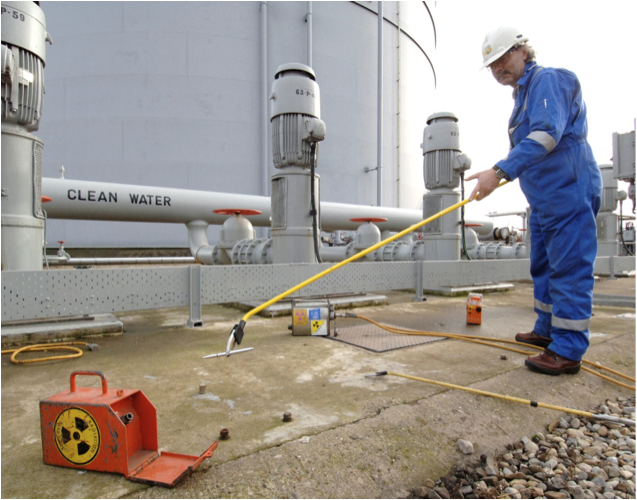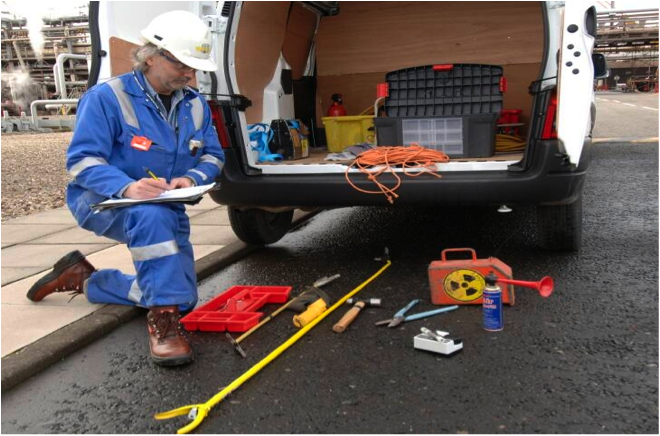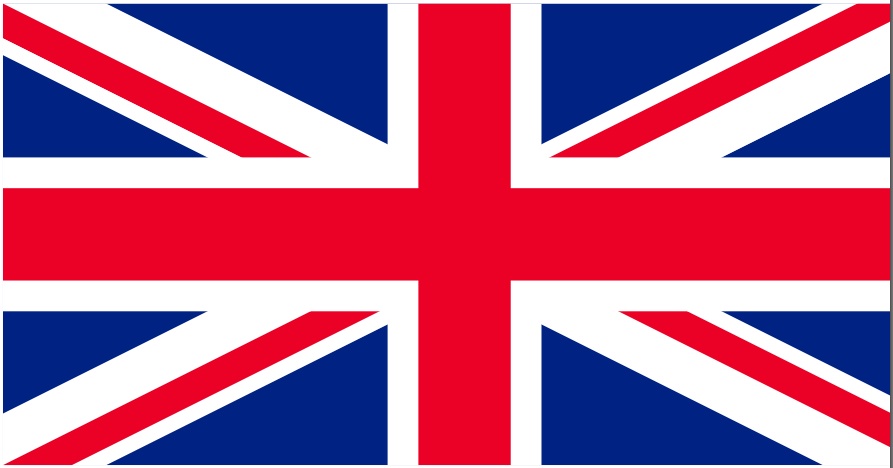pdf Industrial radiography guide tube damaged during use led to high exposure (821 kB)
Description of the incident
Night-time radiography work was being carried out using a 370 GBq (10 Ci) iridium-192 source in a remote exposure container when the wind blew a steel bar over on to the guide tube. The source was in the exposed position at the time and the bar slightly crushed the tube. When retraction of the source was attempted, the source became lodged near the crushed section. The radiographer attempted to reshape the guide tube by lightly hammering the flattened section until the source could be withdrawn into the shielded container.
A bag of lead shot was used to try to shield the source during the hammering, but unfortunately this was incorrectly positioned and had little or no effect in reducing dose rates. The recovery operation is alleged to have taken less than five minutes although the subsequent investigation casts some doubt on this.
The incident was not reported at the time and only came to light following the routine assessment of the radiographer’s dosemeter. The whole recovery operation was ill-conceived and demonstrated a lack of contingency planning and understanding of the situation.
Radiological consequences
The radiographer’s dosemeter recorded an effective (whole body) dose of 370 mSv.
Chromosome aberration analysis of a blood sample gave an estimated whole body dose of: 130 mSv (95% confidence interval 20–340 mSv).
The investigation concluded that the recorded doses should remain on the dose record. No reliable assessment of his hand dose could be made, but it was almost certainly much greater than the whole body dose.
Lessons learned
Attempts to forcibly retract a stuck source through a crushed guide tube will, almost certainly, result in the worst possible situation, with the unshielded source becoming lodged at the damaged part of the tube.
The recommended recovery option at this point is to clearly identify the position of the stuck source, apply local shielding, then cut out the portion of the guide tube containing the source and deposit it in a suitably shielded emergency container.
Contingency plans should require the presence of a suitable emergency container on site, together with long handled tools: the lack of such a container will severely limit the safe recovery options. These plans should be rehearsed so radiographers are familiar with the necessary procedures if an emergency should arise.
Instruction and training of radiographers should clearly state the hazards associated with the very high dose rates close to unshielded sources, and stress the importance of taking appropriate protection measures.


pdf Industrial radiography guide tube damaged during use led to high exposure (821 kB)



